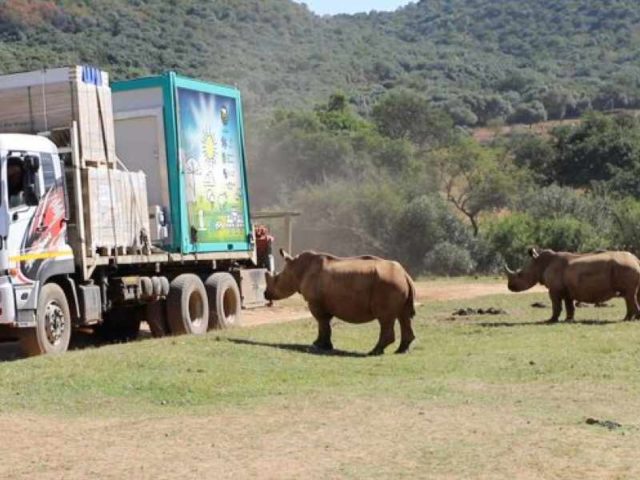Re: Update: Timbi
Posted: Sat Apr 18, 2020 2:06 pm
This might be worth reading, it's just a small piece from our monthly newsletter. It is to do with the scrutiny and future of such sanctuaries. This is only a portion of the report...
The research outcome has been structured as a practical and interactive tool to evaluate facilities and
select ethical animal interactions and whether there is any conservation value in having the facility. I
am sure that over the next few years all the so-called sanctuaries and rehab centres in South Africa and
the Lowveld (Care for Wild, Chimp Eden, Elephant Sanctuary, Hoedspruit Endangered Species Centre,
Moholoholo, SanWild and C.A.R.E, to name a few in the Lowveld that are familiar to me) will be scruti-
nised. “Organisations may call themselves a sanctuary and/or rehabilitation centre – this does not
mean that they are a genuine facility”, according to the SATSA report.
By following the SATSA evaluation tool the following are some of the questions that they will have to
answer:
“Does the facility practice ALL the criteria for a true sanctuary or rehabilitation centre?
Are the rehabilitation programmes recognised and/or supervised by a credible organisation with
experience in animal rehabilitation and is there evidence that animals will be used for repopula-
tion, relocated, re-integrated or re-wilded?
Is the species really endangered or threatened (check the latest Threatened or Protected Species
(“TOPS”) list)?
Is there any indication of: misleading advertising, deceptive behaviour, lack of transparency?
Do the animals need to be in captivity – can they be rehabilitated and released back into the
wild?
Have all avenues for rehabilitation and/or re-wilding been considered?
Are the animals being kept in captivity only to support a volunteering programme?”
Recent research has shown that there is no conservation value in breeding lions and tigers in captivity
in South Africa (Williams & Sas-Rolfes, 2019) and it can be assumed that this argument is valid for many
other species. Rehabilitation back into the wild of larger species such as lions, elephants, baboons and
many others, is also extremely problematic.
The question needs to be asked whether the same kind of effort and funds will not contribute better to
the conservation of these animals if it is used to protect natural habitats for such animals, especially
where animals have not been classified as Threatened Or Protected Species (TOPS) according to our
Biodiversity Act.
The document was compiled by Dr Freek Venter.
The research outcome has been structured as a practical and interactive tool to evaluate facilities and
select ethical animal interactions and whether there is any conservation value in having the facility. I
am sure that over the next few years all the so-called sanctuaries and rehab centres in South Africa and
the Lowveld (Care for Wild, Chimp Eden, Elephant Sanctuary, Hoedspruit Endangered Species Centre,
Moholoholo, SanWild and C.A.R.E, to name a few in the Lowveld that are familiar to me) will be scruti-
nised. “Organisations may call themselves a sanctuary and/or rehabilitation centre – this does not
mean that they are a genuine facility”, according to the SATSA report.
By following the SATSA evaluation tool the following are some of the questions that they will have to
answer:
“Does the facility practice ALL the criteria for a true sanctuary or rehabilitation centre?
Are the rehabilitation programmes recognised and/or supervised by a credible organisation with
experience in animal rehabilitation and is there evidence that animals will be used for repopula-
tion, relocated, re-integrated or re-wilded?
Is the species really endangered or threatened (check the latest Threatened or Protected Species
(“TOPS”) list)?
Is there any indication of: misleading advertising, deceptive behaviour, lack of transparency?
Do the animals need to be in captivity – can they be rehabilitated and released back into the
wild?
Have all avenues for rehabilitation and/or re-wilding been considered?
Are the animals being kept in captivity only to support a volunteering programme?”
Recent research has shown that there is no conservation value in breeding lions and tigers in captivity
in South Africa (Williams & Sas-Rolfes, 2019) and it can be assumed that this argument is valid for many
other species. Rehabilitation back into the wild of larger species such as lions, elephants, baboons and
many others, is also extremely problematic.
The question needs to be asked whether the same kind of effort and funds will not contribute better to
the conservation of these animals if it is used to protect natural habitats for such animals, especially
where animals have not been classified as Threatened Or Protected Species (TOPS) according to our
Biodiversity Act.
The document was compiled by Dr Freek Venter.
